The featured snippet is probably the most prominent and controversial feature displayed in Google's search results. In this post, I explain what the featured snippet is all about, how it affects the click-through rate and how, if desired, to prevent your content from being displayed there.
What is the featured snippet?
The so-called "featured snippet" is a highlighted search result that is displayed very prominently on position 1 on Google:
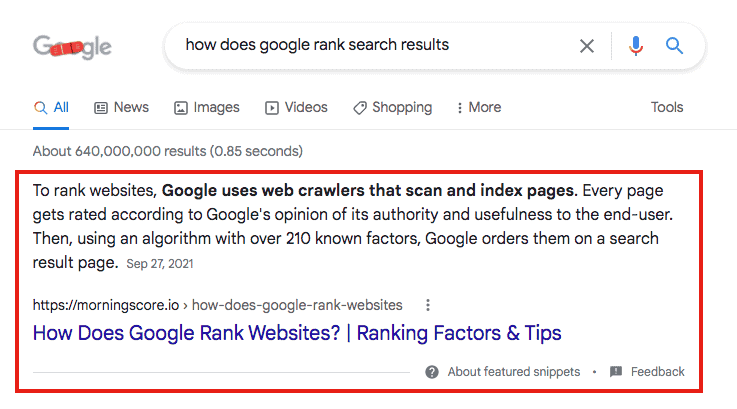
As a rule, the snippet contains a text excerpt of the respective website. However, lists and even tables can also be displayed:
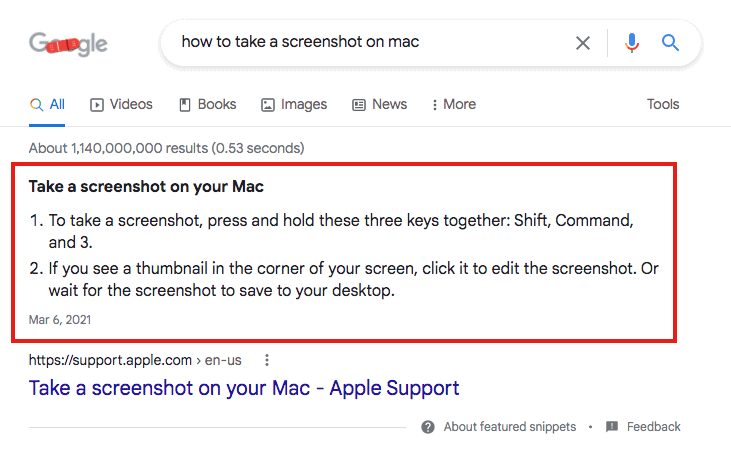
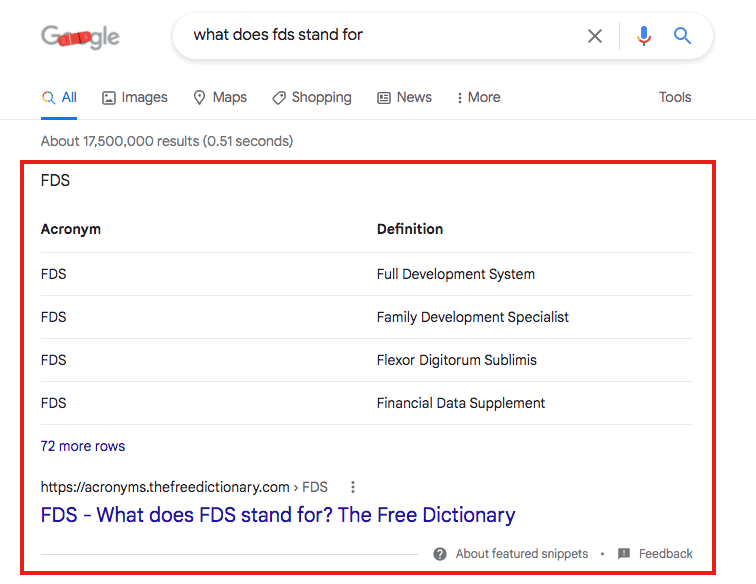
In some places, additional images are displayed. On the desktop there are usually one to two images, on the smartphone sometimes a "picture carousel" with six images is displayed above the snippet.
However, the displayed images do not necessarily come from the website from which the text excerpt originates. In case of doubt, Google will look for the appropriate material from several websites.
When are featured snippets displayed?
With the help of featured snippets, Google primarily wants to answer (simple) questions of users already in the search results. These are usually closed questions to which there is an unambiguous or clear answer. Since the space in the snippet is limited, the question should also be able to be answered in a few sentences.
The featured snippet is mainly played out when a specific question is entered in Google, which is introduced with a corresponding question word (why, what, how, etc.). Here are a few examples:
- Why is the sky blue?
- What are the seven wonders of the world?
- How much vitamin C per day?
Highlighting on the website
When users click on the website from which the featured snippet originates, Google automatically scrolls to the corresponding text passage and even highlights the excerpt:

However, this only applies to text extracts, not to lists and tables. This is very practical for searchers, especially with extensive content, as they are automatically forwarded to the appropriate text passage and do not have to search for it themselves.
However, this procedure can of course also be viewed critically, as Google - outside of its own search results - has a direct influence on the presentation of the respective website.
Integration in the search results
The featured snippet is very closely related in the Google universe to the "similar questions" ("People also ask"), which are also displayed as a feature in the search results:
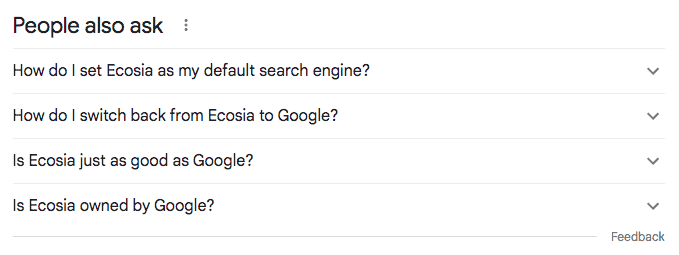
Every question that is displayed here is based on a featured snippet. So if you type the question 1:1 into Google, a featured snippet will appear with the same text that is displayed in the drop-down view of the similar questions.
It is important to understand this context in order to be able to force or provoke featured snippets when creating SEO texts. More on this in a moment. Furthermore, featured snippets are sometimes also integrated into the knowledge graph:
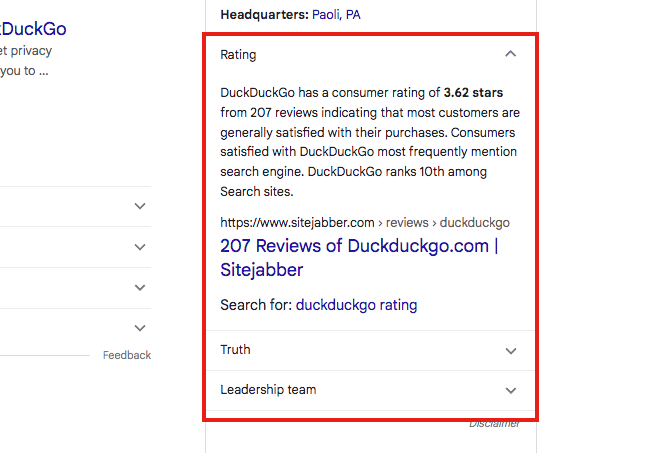
Google usually uses Wikipedia for the description text in the knowledge graph. Via the featured snippets, smaller websites also have the chance to be displayed in the prominently placed knowledge graph.
The featured snippet attracts attention
The featured snippet takes up much more space on the search results page ("SERP" = Search Engine Result Page) than a normal search result. While a regular search result is only 100 pixels high, a featured snippet can reach a height of more than 450 pixels.
Depending on the screen size, it takes up almost the entire visible area on the desktop ("above the fold"). On the smartphone, the featured snippet sometimes even extends beyond the visible area. Recently, the snippet has also been stretched across the full screen width in individual cases:
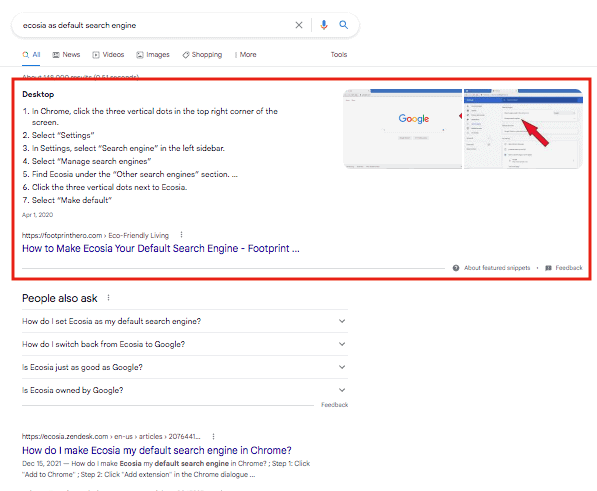
Links within the featured snippet
In English search results, links to Wikipedia have recently been included within the text excerpt in the featured snippet. Especially when it comes to definitions of terms.
The links are marked with a dashed line. Clicking on the link opens a pop-up, which in turn displays an excerpt from Wikipedia. This is a featured snippet within a featured snippet, so to speak:
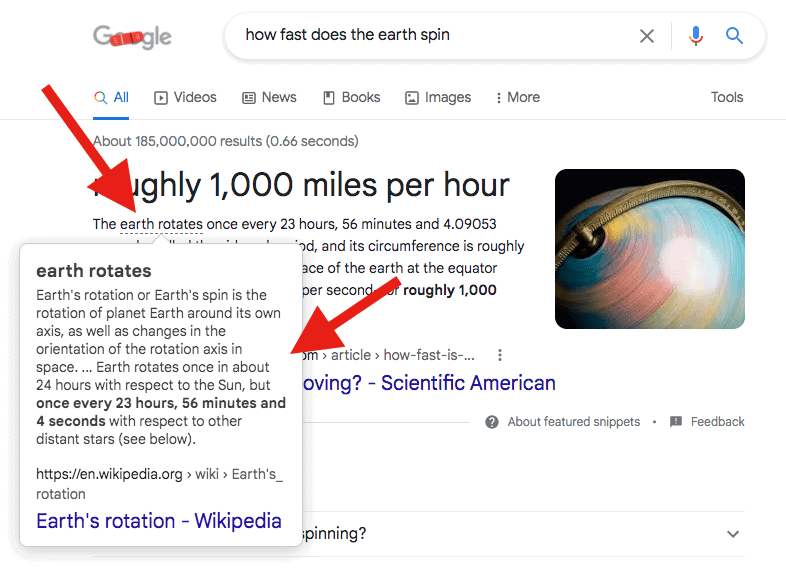
The Evolution of featured snippets
When Google introduced featured snippets in January 2014, the snippets were still displayed in a clearly delineated or highlighted box with shadowing. This has changed recently: Currently, the snippets are de facto displayed without any real demarcation. At first glance, it seems as if the content comes directly from Google.
Only the blue link to the corresponding website reveals that it is an excerpt from a third-party site. In addition to the look, the way the snippets are integrated into the top 10 search results has also changed. Initially, the featured snippet was actually a real "position 0", so next to the snippet 10 regular results were still displayed.
In addition, the website that was included in the snippet could also rank again further down with a regular search result - the website was then represented twice in the top 10. This is no longer possible today. Currently, the featured snippet simply replaces the position 1.
What influence does the featured snippet have on the click-through rate?
Shortly after the introduction of featured snippets, critical voices were raised. They complained that users would no longer have a reason to click on the website if the content was already displayed in the search results.
The story of the website celebritynetworth.com, for example, which specializes in researching the assets of celebrities, reads particularly dramatically. According to its own statement, Google's monthly traffic collapsed by 65 percent in the meantime due to the introduction of featured snippets. As a result, the operator had to lay off half of its team. The fact is that featured snippets can have both a positive and a negative influence on the click rate on the search result.
The direction in which the pendulum ultimately swings depends above all on the type of content. The simpler or more banal the content, the more likely it is that the click rate will fall. This is especially true for search queries that can be answered with a single sentence. An example:
"How do I take a screenshot on a Mac?"
The question is answered clearly and unambiguously in a featured snippet. As a user, I then have no reason to open the website. So the click rate is rather low here.
The situation is different for more complex questions. Either no featured snippets are displayed at all. And if they are, the motivation to click on the website to get more information or to delve deeper into the topic is still high. An example:
"How can I improve my Google ranking?"
This question is also answered for me in a Featured Snippet. However, the answer is of course very superficial. It is simply impossible to answer this question in one sentence. The click rate is therefore probably not negatively influenced.
Own data confirm the pattern
Out of interest, I used Google Search Console to look at some of the rankings of my own sites that I knew were being displayed as featured snippets.
To do this, I looked at the performance data over a period of two months. I made sure that the average position over the period was plus/minus 1.
The click rate varied enormously depending on the search term. For very specific questions, it was sometimes between 7 and 10 percent:
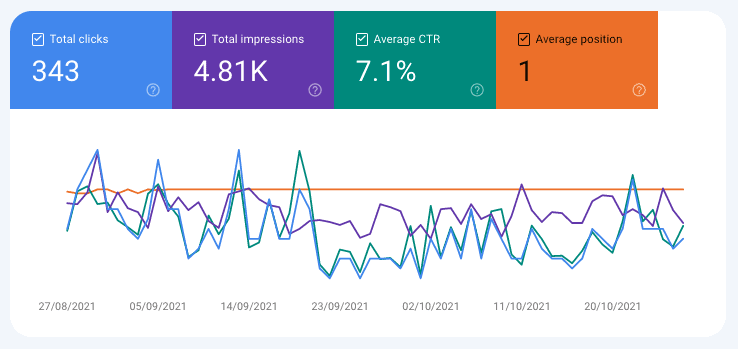
For rather open or vague search queries, on the other hand, the click rate was sometimes 23.4 percent. For comparison: According to an analysis by Sistrix, the click rate for the result on position 1 is 28.5 percent on average.
Although I naturally only analysed a tiny data set, the pattern described above was basically confirmed:
- The more concrete (closed) the question, the lower the click rate. And:
- The more vague (open) the question, the higher the click rate.
How do I gain access to the featured snippet?
In principle, it can be worthwhile to optimize your own content for display in a featured snippet. Because it is better having a click rate of 10 percent in the featured snippet than a click rate of 5 percent on position 6.
As mentioned above, you can base your optimization on the "similar questions" that are displayed for a keyword in the search results. To "provoke" the display in a featured snippet, you have to make it as easy as possible for the Google bot. Google is a machine and machines love clear structures.
First and foremost, it is about the correct arrangement of the "trigger" (the question) and the content (the answer). The "trigger" should be placed immediately before the content. Either in the form of a subheading or a sentence marked in bold:
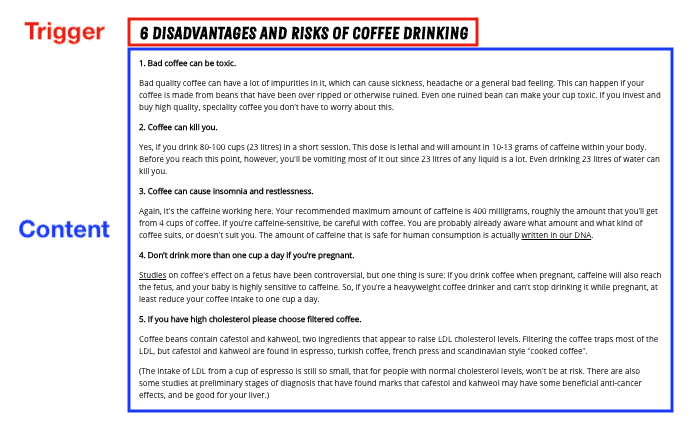
Furthermore, it also depends on the design of the content. So, what kind of content is needed? A written definition, a bullet point list or a table? There is not necessarily a right or wrong here. Just think about what would help the user the most.
Google has become really good at recognizing relevant content that fits a specific question of the user. It is important that you formulate the content as concretely as possible. So don't start with Adam and Eve and do without introductory sentences and empty phrases. Get straight to the point.
It's a straight question and answer game. If someone asks, "How do I take a screenshot on a Mac?" you don't have to explain what a screenshot is first. Focus on answering the question as concretely as possible:

For test purposes, I focused entirely on getting as many featured snippets as possible in one article. The result - 23 featured snippets with only one article! However, how many featured snippets you can achieve also depends on the scope or the type of topic.
Can I block the featured snippet?
Yes, you can use a meta tag in the source code of your website to tell Google not to show your content within featured snippets. There are three different ways to do this - but unfortunately none of them is quite simple and waterproof...
Meta tag max-snippet
The first option is to experiment with the max-snippet meta tag. With the max-snippet tag you can define how many characters of your content should be displayed in Google's search results.
If the value is lower than the possible text excerpt, Google will refrain from displaying the content in the search results (without guarantee, of course). The tag is embedded in the meta tag:
<meta name="robots">This is what it might look like, for example:
<meta name="robots" content="max-snippet:180">With this setting, you limit the content output in the search results to 180 characters. But be careful: You also influence the number of characters for the normal meta description!
If you set the value too low, this can lead to problems. The normal meta description usually has about 160-170 characters. So this is not really a solution, but rather a workaround.
Customize "max-snippet" tag
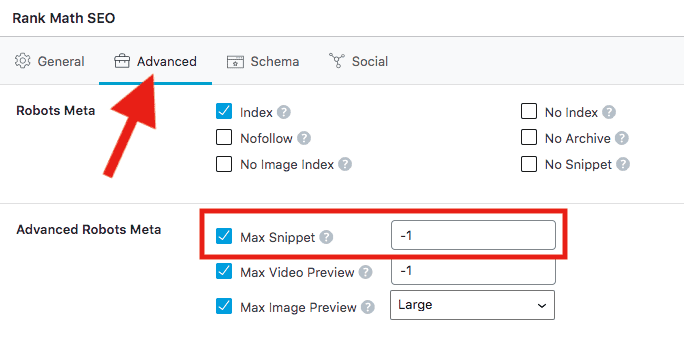
Tag nosnippet
If you want to make sure that your content is not displayed in snippets, you can also use the "nosnippet" tag. This tag is also included in the robots meta tag:
<meta name="robots" content="nosnippet">In my opinion, the use of nosnippet is largely useless, because with this tag you also prohibit Google from displaying the normal meta description!
Inline tag data-nosnippet
Last but not least, you also have the option to exclude individual text sections from any snippets (meta description and featured snippet). Use the inline tag "data-nosnippet" as follows:

This tag can be included in span, div and section elements.
My conclusion on the featured snippet
The featured snippet was introduced by Google to further improve the user experience and to answer simple questions already in the search results. For users, this is usually very helpful. If you run a website, however, the whole thing is a double-edged sword. Featured snippets can influence the click rate on the search result positively and negatively.
Depending on your business model, this can have drastic consequences for your website, especially in the form of traffic losses. The fact that Google does not offer you a really effective way to exclude your own content from featured snippets shows how important the snippet is for Google.
